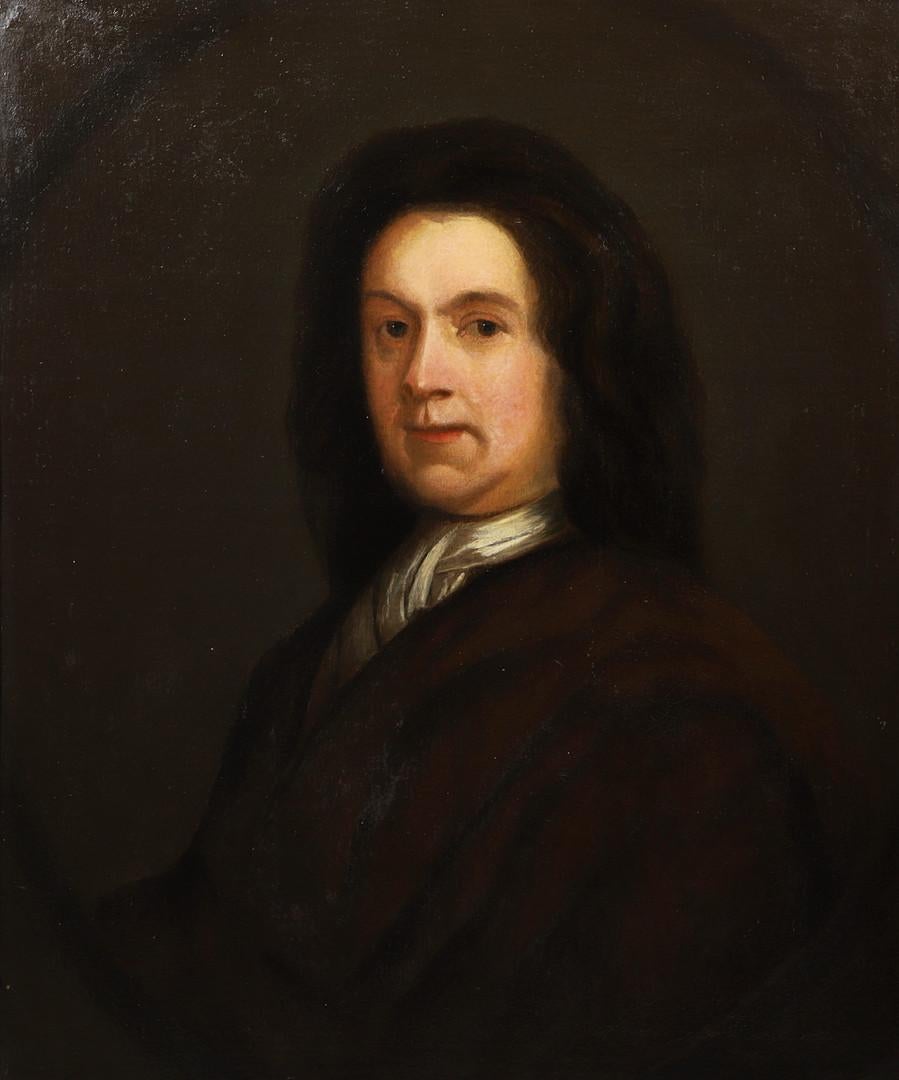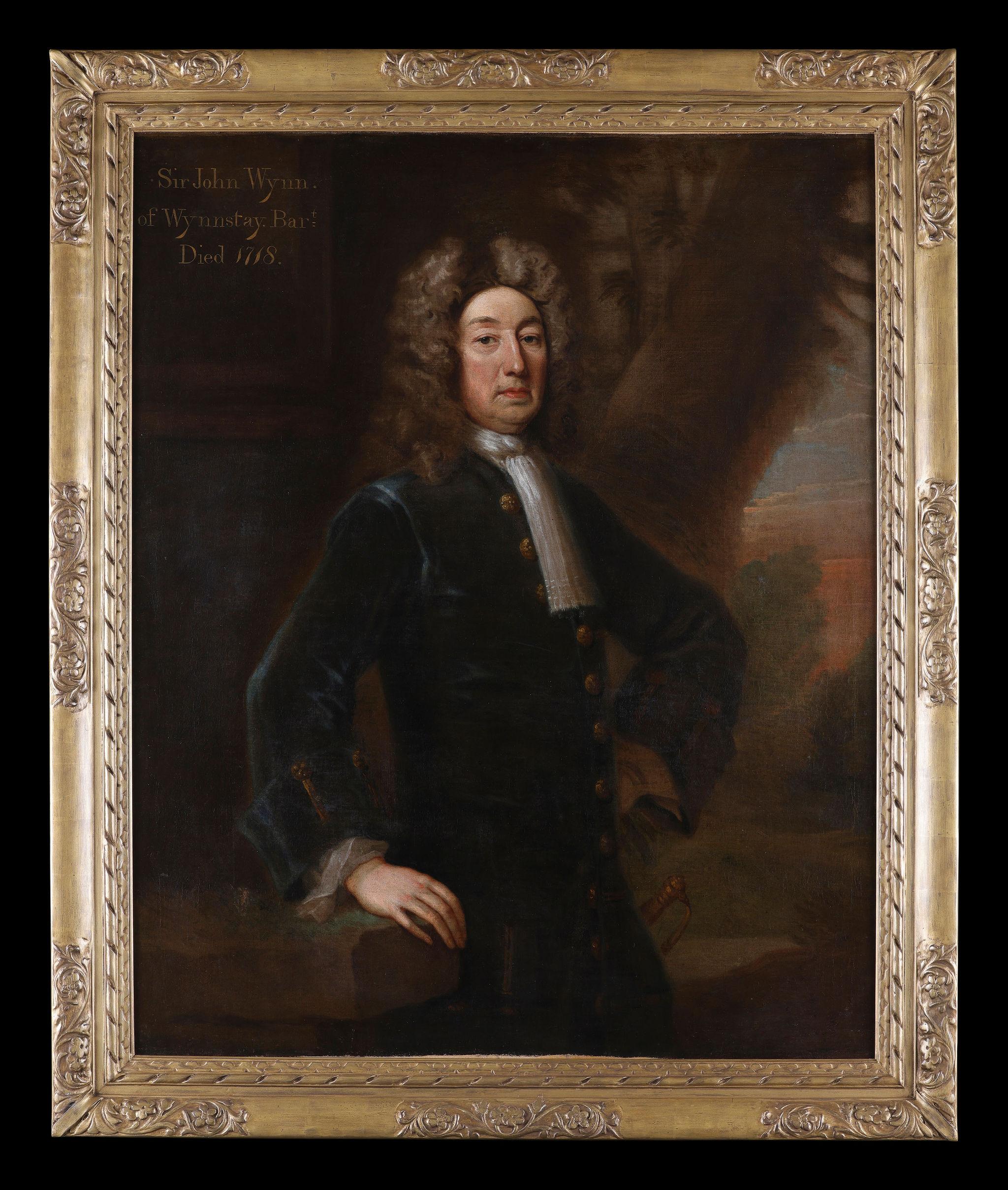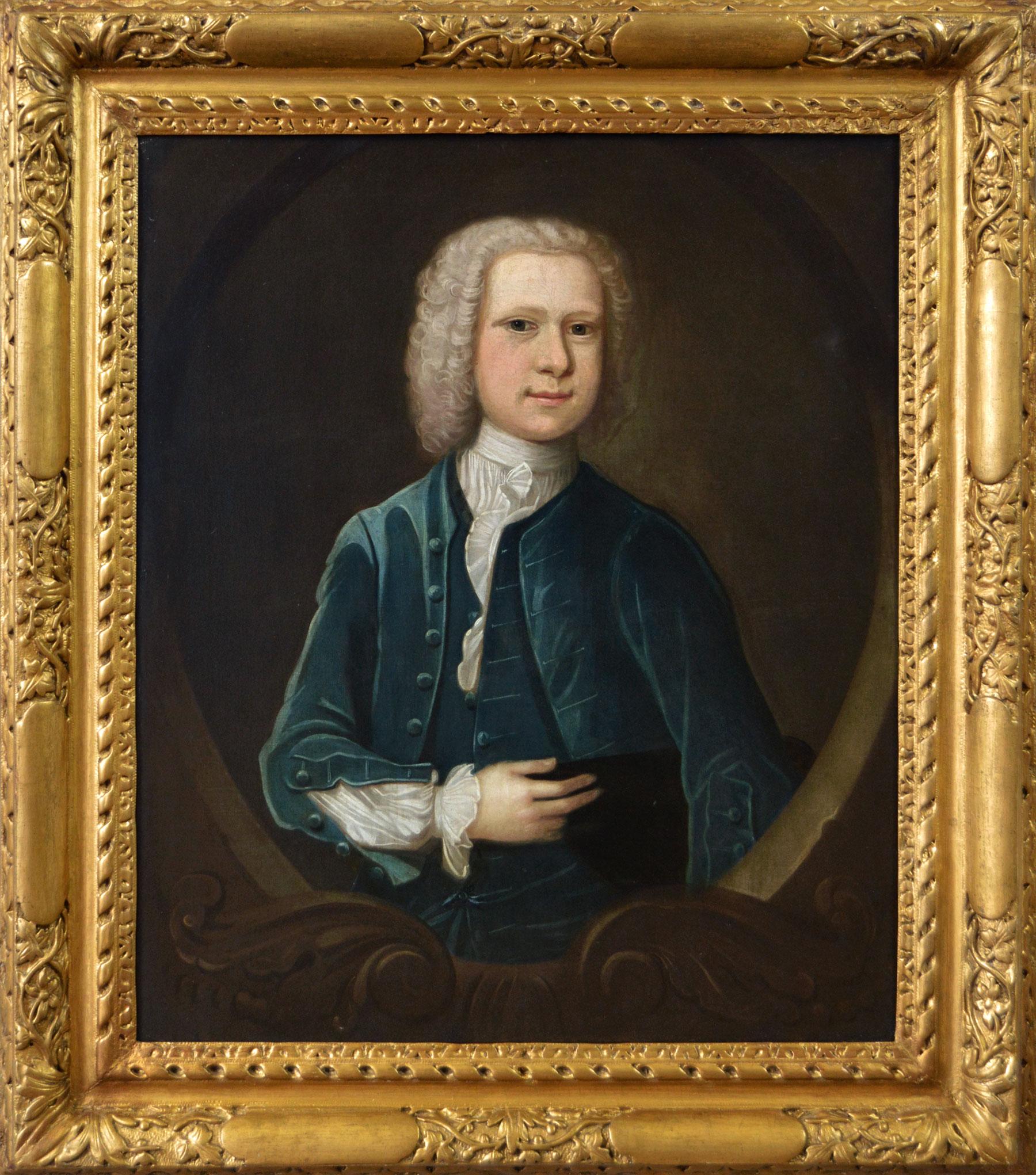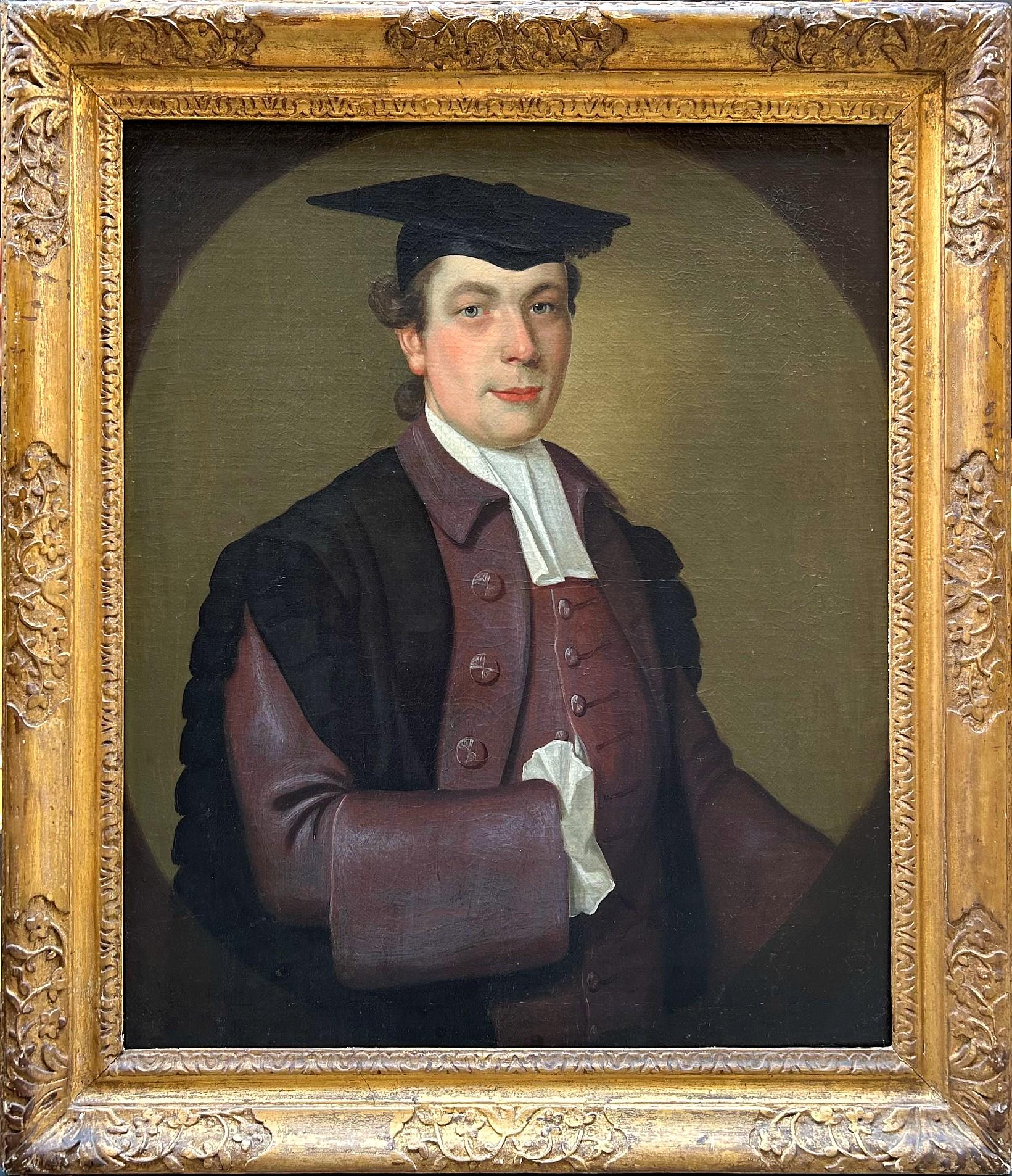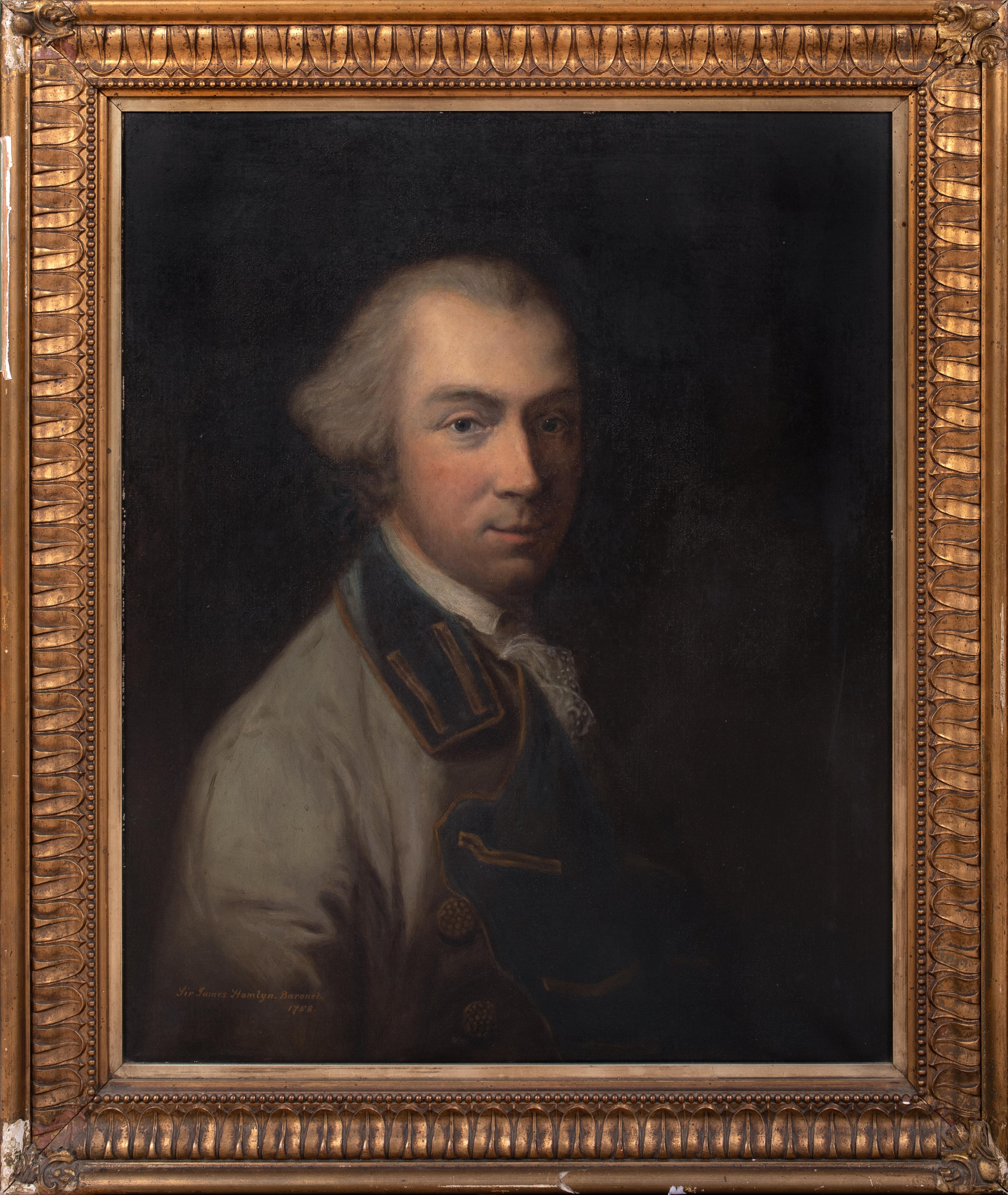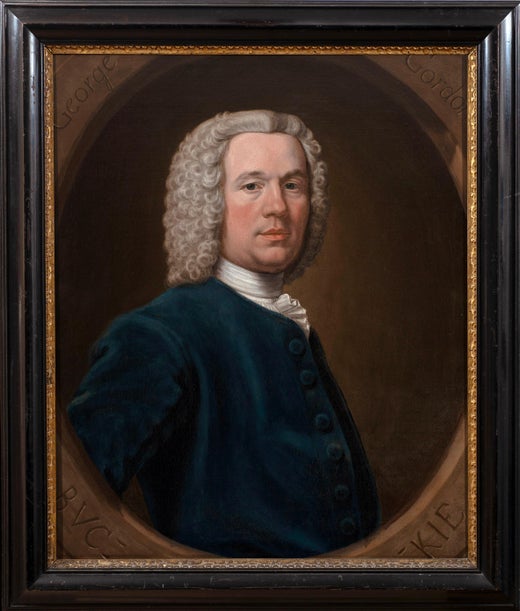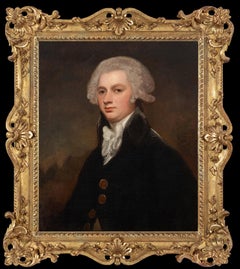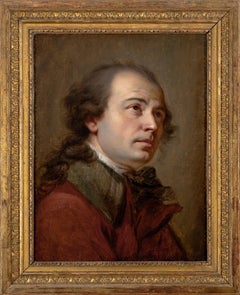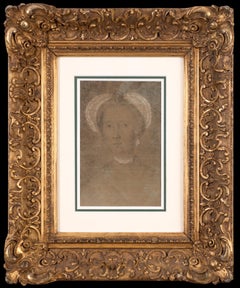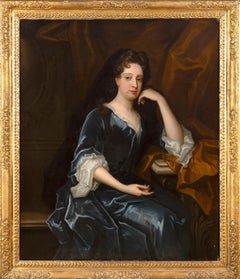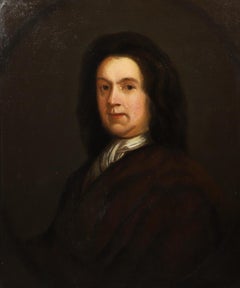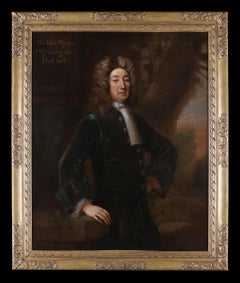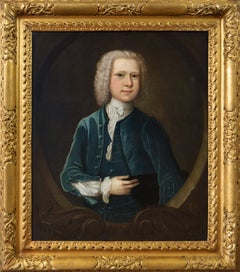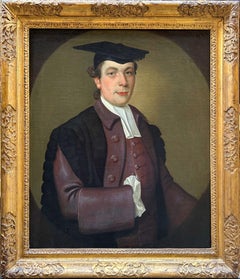Items Similar to Portrait of George Gordon, 7th Laird of Buckie (1707-1756)
Want more images or videos?
Request additional images or videos from the seller
1 of 14
John AlexanderPortrait of George Gordon, 7th Laird of Buckie (1707-1756)1743
1743
$10,290.71
£7,500
€8,777.15
CA$14,355.31
A$15,572.27
CHF 8,188.77
MX$189,483.06
NOK 102,372.82
SEK 96,550.14
DKK 65,532.68
About the Item
John Alexander (Scottish, 1686-1766)
Portrait of George Gordon, 7th Laird of Buckie (Scottish, 1707-1756), c. 1743
Oil on canvas
In a carved ebonised frame, with gilded inner slight edge
76.5 x 63 cm.; (within frame) 89.5 x 76.2 cm.
Provenance:
Commissioned by Cosmo Gordon, 3rd Duke of Gordon (1720-1752), for Gordon Castle, Morayshire;
Recorded as no. 70 in Amy Gordon-Lennox, Countess of March’s 1877 Catalogue of Pictures at Gordon Castle;
Thence by descent to Charles Gordon-Lennox, 9th Duke of Richmond and Gordon;
Anderson and England, Gordon Castle sale, 31 August 1938, lot 1315;
Where purchased by John L. McNaughton, town clerk of Buckie;
Christie’s, King Street, where consigned on 30 May 1980, and transferred to Christie’s, South Kensington on 30 July 1980;
Ston Easton Park, Ston Easton, Bath, inv. no. P9;
Where acquired by McMillan & Sons Fine Art, Bute Street, London;
Private Collection, United Kingdom.
Literature:
James Holloway, Patrons and Painters: Art in Scotland, 1650-1760 (Broxburn, Scotland: Alna Press Ltd., 1989), p. 89
Amy Gordon-Lennox, Countess of March, Catalogue of Pictures at Gordon Castle (s.n., 1877), p. 159
Painted in half-length profile within a feigned oval cartouche, Gordon’s typically genteel attire comprises a powdered periwig, deep blue silk frock coat, and frilled linen stock. The cartouche bears the inscription, ‘George/Gordon/BVC-/-KIE’, a reference to Gordon’s lairdship of the Buckie territories on the Moray Firth. The portrait was commissioned by Cosmo Gordon, 3rd Duke of Gordon, and passed by descent for two centuries within the collection of the Dukes of Gordon at Gordon Castle, hanging in a primary bedroom alongside three portraits of the Ducal Gordons by John Alexander. Amy Gordon-Lennox, Countess of March, recorded the work in her 1877 catalogue of paintings at the castle, and it was sold by the 9th Duke in 1938. It was afterwards in the collection of Ston Easton Park, Bath.
George Gordon was one of the numerous Gordons painted by Alexander, whose patrons largely comprised north-easterly Jacobites. The round fullness of his features is typical of Alexander’s characterful style; the chestnut colouring of the subtly gradated background and surrounding cartouche are likewise consistent with the artist’s preference for mild mid-tones. The present work is compositionally similar to Alexander’s 1741 portrait of William Chalmers of Westburn in the Aberdeen City Council Collection (ABDAG008205), and would suggest Alexander’s repetition of preferred compositional arrangements. The canvas and frame are marked with records of sale and inventory verso. Evocatively, inscriptions written in pencil on the canvas stretcher bars read, ‘Left of fireplace’ and ‘Right of east window’.
George Gordon was the 7th Laird of Buckie, Banffshire, a branch of the Gordons whose lands had once included those of Cairnfield. Gordon was a Jacobite loyalist, and in 1745 took up arms in the rising led by Charles Edward Stuart to reinstate the Old Pretender, James Francis Edward Stuart. Gordon’s role in the uprising was not insignificant: a letter dated 20 October 1745 records that, ‘George Gordon of Buckie […] and most of the gentlemen of Banffshire, mounted on horses’ had the honour of being always with Prince Charles (Tayler, p. 77). Gordon was joined by his younger brother, Charles, likely the Charles Gordon said to have assisted in robbing Sir James Sinclair (commander of the Hanoverian Royal Scots) of his horses near Portsoy on 7 May 1746 (McDonnell, p. 20). Indeed, Alexander himself was present during the combat along with his son, Cosmo Gordon. Other Gordon representatives included Alexander Gordon, 2nd Duke of Gordon. Hanoverian retribution followed the failed rising, and Alexander was declared a wanted man in 1746, though resumed working shortly thereafter by 1748.
Alexander had met the 2nd Duke of Gordon around 1717 whilst working in Italy. Head of one of the leading Roman Catholic families in Scotland, the Duke’s great continental friendships included Cosimo III de’Medici. Upon their return to Scotland, the Duke commissioned Alexander to paint an ambitious ceiling decoration for the staircase at Gordon Castle between 1720-25, alongside three large views of Rome, and portraits of the Ducal children, including Cosmo Gordon, later 3rd Duke of Gordon – after whom Alexander would name his own son, Cosmo Alexander. It was the 3rd Duke who would commission the present portrait some two decades later in c. 1743, having employed Alexander to paint important kinsmen and tenants for display in the Castle (Holloway, p. 89).
John Alexander was one of the leading Scottish artists of the 18th century. Born to an Aberdeen doctor, he boasted patrilineal descent from George Jamesone, a purported student of Rubens and Van Dyck, and the founder of a Scottish school of portraiture which found its highest expression in Ramsay and Raeburn in the following century. Alexander travelled to Rome in 1711 where he trained under Giuseppe Bartolomeo Chiari. He produced engravings after Raphael’s frescoes in the Vatican Loggia, and worked for the Marquess of Annandale to collect paintings and sculpture; he made drawings of the works, and collected some copies for himself, which he brought back to Scotland in 1720. Whilst in Italy, Alexander received commissions from the Medici in Florence, and the exiled Stuart court in Rome, who included the Lord Chief Justice Coke and the Earl of Mar. Lord Mar had arrived in Italy after the failed Jacobite rising of 1715, and even commissioned Alexander on behalf of the exiled Royal family: Alexander wrote to Mar, ‘You will receive from the post the Parnassus of Raphael […] I pray you anew to excuse my weak beginnings to the King’ (Holloway, p. 86).
Alexander married Isobel Innes of Tillyfour in 1723 and their son Cosmo was born the following year. Their younger son Charles was sent abroad to the Scots Benedictine College at Ratisbon, and his daughter married George Chalmers, son to Roderick Chalmers and heir to an impoverished baronetcy. Alexander took a number of aristocratic commissions, which included the 4th Earl and Countess of Kinmore; James Hamilton, 5th Duke of Hamilton; and the 7th Earl of Wemyss. He was based in Edinburgh in his later career, painting figures of early Enlightenment Edinburgh, such as George Drummond, the Lord Provost who had envisaged the grid plan of Edinburgh’s New Town. Alexander was a close friend of the architect James Gibbs, and the engraver and antiquary George Vertue, who described the artist as ‘a merry dispos’d gent, [who] laughs eternally’ (Holloway, p. 85). Alexander was a signatory in 1729 of the charter of Scotland’s first art institution, the Academy of St Luke of Edinburgh.
I am grateful to Amanda Sharp of Goodwood House for providing archival material pertaining to the Gordon Castle sale of 1938.
Bibliography and further reading:
Anderson and England, Catalogue of Antiques and Other Surplus Furnishings […] To be sold by Auction by Instructions of His Grace, the Duke of Richmond and Gordon (Elgin, 1938)
Bulloch, J.M., Gordons of Cairnfield, And Their Hold on the Lands of Echres, Auchinhalrig, Ardneidlie, Cuffurach, Mayne, Myrieton, Coynach, Whitburn, Lunan, Briggs, Arradoul and Rosieburn (Edinburgh: Keith, 1910)
Gordon-Lennox, Amy, Countess of March, Catalogue of Pictures at Gordon Castle (s.n., 1877)
Holloway, James, Patrons and Painters: Art in Scotland, 1650-1760 (Broxburn, Scotland: Alna Press Ltd., 1989)
Macmillan, Duncan, Scottish Art: 1460-1990 (Edinburgh: Mainstream Publishing Company, 1990)
McDonnell, Frances, Jacobites of 1715, North East Scotland and Jacobites of 1745, North East Scotland (Baltimore, M.A.: Clearfield, 2008)
Tayler, Alistar, A Jacobite Exile (London: A MacLehose & Co., 1937)
- Creator:John Alexander (1945, American)
- Creation Year:1743
- Dimensions:Height: 31.89 in (81 cm)Width: 30.01 in (76.2 cm)
- Medium:
- Movement & Style:
- Period:1740-1749
- Condition:The work is in good and stable condition, commensurate with age.
- Gallery Location:Maidenhead, GB
- Reference Number:1stDibs: LU2820216063762
John Alexander
John Alexander was one of the leading Scottish artists of the 18th century. Born to an Aberdeen doctor, he boasted patrilineal descent from George Jamesone, a purported student of Rubens and Van Dyck, and the founder of a Scottish school of portraiture which found its highest expression in Ramsay and Raeburn in the following century. Alexander travelled to Rome in 1711 where he trained under Giuseppe Bartolomeo Chiari. He produced engravings after Raphael’s frescoes in the Vatican Loggia, and worked for the Marquess of Annandale to collect paintings and sculpture; he made drawings of the works, and collected some copies for himself, which he brought back to Scotland in 1720. Whilst in Italy, Alexander received commissions from the Medici in Florence, and the exiled Stuart court in Rome, who included the Lord Chief Justice Coke and the Earl of Mar. Lord Mar had arrived in Italy after the failed Jacobite rising of 1715, and even commissioned Alexander on behalf of the exiled Royal family: Alexander wrote to Mar, ‘You will receive from the post the Parnassus of Raphael […] I pray you anew to excuse my weak beginnings to the King’ (Holloway, p. 86). Alexander married Isobel Innes of Tillyfour in 1723 and their son Cosmo was born the following year. Their younger son Charles was sent abroad to the Scots Benedictine College at Ratisbon, and his daughter married George Chalmers, son to Roderick Chalmers and heir to an impoverished baronetcy. Alexander took a number of aristocratic commissions, which included the 4th Earl and Countess of Kinmore; James Hamilton, 5th Duke of Hamilton; and the 7th Earl of Wemyss. He was based in Edinburgh in his later career, painting figures of early Enlightenment Edinburgh, such as George Drummond, the Lord Provost who had envisaged the grid plan of Edinburgh’s New Town. Alexander was a close friend of the architect James Gibbs, and the engraver and antiquary George Vertue, who described the artist as ‘a merry dispos’d gent, [who] laughs eternally’ (Holloway, p. 85). Alexander was a signatory in 1729 of the charter of Scotland’s first art institution, the Academy of St Luke of Edinburgh.
About the Seller
No Reviews Yet
Vetted Professional Seller
Every seller passes strict standards for authenticity and reliability
Established in 2024
1stDibs seller since 2024
- ShippingRetrieving quote...Shipping from: Maidenhead, United Kingdom
- Return Policy
Authenticity Guarantee
In the unlikely event there’s an issue with an item’s authenticity, contact us within 1 year for a full refund. DetailsMoney-Back Guarantee
If your item is not as described, is damaged in transit, or does not arrive, contact us within 7 days for a full refund. Details24-Hour Cancellation
You have a 24-hour grace period in which to reconsider your purchase, with no questions asked.Vetted Professional Sellers
Our world-class sellers must adhere to strict standards for service and quality, maintaining the integrity of our listings.Price-Match Guarantee
If you find that a seller listed the same item for a lower price elsewhere, we’ll match it.Trusted Global Delivery
Our best-in-class carrier network provides specialized shipping options worldwide, including custom delivery.More From This Seller
View AllPortrait of a Gentleman, traditionally identified as Edward Addison, Esq., 1780s
By George Romney
Located in Maidenhead, GB
George Romney (1734-1802)
Portrait of a Gentleman, traditionally identified as Edward Addison, Esq., c.1780s
Oil on canvas
In a period carved and gilded swept frame
76.3 x 63.2 cm.; ...
Category
1780s Old Masters Portrait Paintings
Materials
Oil
Tête d’expression portrait study of a gentleman
Located in Maidenhead, GB
French Academic School, 18th century
A tête d’expression study of a gentleman, c. 1780-90
Oil on canvas
46.1 x 35 cm.; (within frame) 57.5 x 46.6. cm.
Provenance:
Private Collectio...
Category
1780s French School Portrait Paintings
Materials
Oil
Bust-length study of a fashionable lady, c. 1760s
Located in Maidenhead, GB
Robert Healy (1743-1771) (attrib.)
Bust-length study of a fashionable lady, c. 1760s
Black chalk on prepared laid blue paper, heightened with white
15.6 ...
Category
1760s Old Masters Portrait Drawings and Watercolors
Materials
Chalk
Portrait of a lady in widow’s weeds, seated in an architectural setting
Located in Maidenhead, GB
Charles d’Agar (1669-1723) (attrib.)
Portrait of a lady in widow’s weeds, three-quarter-length, seated in an architectural setting
Oil on canvas
In an original carved and gilded Le...
Category
17th Century Old Masters Portrait Paintings
Materials
Oil
$9,879 Sale Price
24% Off
Portrait of the artist’s cousin, Gladys Coombs (1899-1963), c. 1920-25
Located in Maidenhead, GB
John George Hookham (1899-1972)
Portrait of the artist’s cousin, Gladys Coombs (1899-1963), c. 1920-25
With a figure study verso
Oil on canvas
In an attractive, stylised ‘Lely’ type ...
Category
1920s Post-Impressionist Portrait Paintings
Materials
Oil
$4,390 Sale Price
52% Off
Portrait study of a Lady, wearing precious stones and pearls
Located in Maidenhead, GB
Adriaen van der Werff (1659-1722) (attrib.)
Portrait study of a Lady, wearing precious stones and pearls
Black and white chalk, heightened with white, on blue paper
Inscribed verso, ...
Category
17th Century Rococo Portrait Drawings and Watercolors
Materials
Chalk
You May Also Like
Fine Large 17th/ 18th Century English Portrait of Mr. Gilbert Charity Founder
Located in Cirencester, Gloucestershire
Portrait of Mr. Gilbert (believed to be the founder of 'Gilberts Charity, Bridgwater, Somerset)
English School artist, late 17th/ early 18th century
oil...
Category
Late 17th Century Old Masters Portrait Paintings
Materials
Oil, Canvas
'Sir John Wynn, 5th Baronet' three-quarter-length portrait, oil on canvas
By John Vanderbank
Located in St. Albans, GB
Sir John Wynn, 5th Baronet
Canvas Size: 50 x 40" (127 x 102cm)
Outside Frame Size: 58 x 48" (147 x 122cm)
Sir John Wynn, 5th Baronet (1628 – 11 January ...
Category
1710s English School Portrait Paintings
Materials
Oil
18th Century portrait oil painting of a gentleman
Located in Nr Broadway, Worcestershire
Follower of Enoch Seeman the Younger
German, (1694-1744)
Portrait of Gilbert Sympkin
Oil on canvas
Image size: 29.25 inches x 24.5 inches
Size including frame: 38 inches x 33.25 inches
A fine three quarter length portrait of a gentleman traditionally identified as Gilbert Simpkin (Sympkin), follower of Enoch Seeman the younger, C1720. The portrait is set in a feigned sculptured oval cartouche, a device used to give a sense of depth. The sitter is depicted wearing a fashionable blue jacket and matching waistcoat with a white chemise and lace jabot. He wears a powdered wig in the fashionable style of the day and is posed holding his hat under his left arm with the fingers of his right hand stretched out. At court, long fingers signified wealth, culture and intelligence. The painting has clearly been executed by an artist of great ability who has been influenced by Enoch Seeman the younger.
Gilbert Simpkin (Sympkin) was born in London on 24 August 1683, the son of John Simpkin and Susannah Butler. His grandfather was also called Gilbert Simpkin. He entered Oxford University in 1700 where he studied at St John’s College. In 1702, he became a student of Middle Temple, which at the time was one of the world’s most important centres of legal education. He later settled in Plymouth and then Bristol. He died in Bristol on 15 May, 1744 and was buried at Bristol Cathedral. He remained unmarried and the portrait may well have been commissioned to commemorate when he was first Called to the Bar or perhaps had established his own practice.
Enoch Seeman or Seemann the younger was born in Danzig, Germany now Gdansk, Poland in 1694. His father was Enoch Seeman Senior, an artist of Flemish origin and his brothers Isaac, Noah and Abraham also became artists. He came to London with his father and brothers around 1704 and established himself as a portrait artist. From 1717 he became painter to the Royal court painting...
Category
18th Century Old Masters Portrait Paintings
Materials
Canvas, Oil
Portrait of a Gentleman Commoner at Oxford, 18th Century Oil on Canvas
By James Northcote b.1746
Located in London, GB
James Northcote
Portrait of a Gentleman Commoner at Oxford
Oil on canvas
Image size: 30 x 25 inches (76 x 63.5 cm)
Original gilt frame
This painting is a comparatively rare example ...
Category
18th Century English School Portrait Paintings
Materials
Canvas, Oil
Old Master Portrait of a Gentleman - British 18th century oil painting
By Michael Dahl
Located in Hagley, England
This stunning 18th century Old Master portrait oil painting is attributed to Swedish born, England based artist Michael Dahl. Painted circa 1690 it is a sumptuous half length portrai...
Category
17th Century Old Masters Portrait Paintings
Materials
Oil
$10,427 Sale Price
20% Off
Portrait Of Sir James Hamlyn (1735-1811), MP for Carmarthen, Sheriff of Devon
By Joshua Reynolds
Located in Blackwater, GB
Portrait Of Sir James Hamlyn (1735-1811), MP for Carmarthen, Sheriff of Devon, 18th Century
follower of Sir Joshua REYNOLDS (1723-1792)
Large 18th Century portrait of Sir James Ham...
Category
18th Century Portrait Paintings
Materials
Canvas, Oil
$3,293 Sale Price
20% Off
More Ways To Browse
Mid Century Painting By Anderson
Alexander John
George Alexander
18th Century George Iii Painting
George Vertue
Gordon Parks
Antique Frock Coat
Raphael Engraving
Antique Jacobite
King George Iii Coat Of Arms
Antique Drummond
Giuseppe Chiari
Raphael Loggia
Charles Edward Stuart
Francis Edward James
Old Pretender
Caspar Netscher
Charles Andre Van Loo
